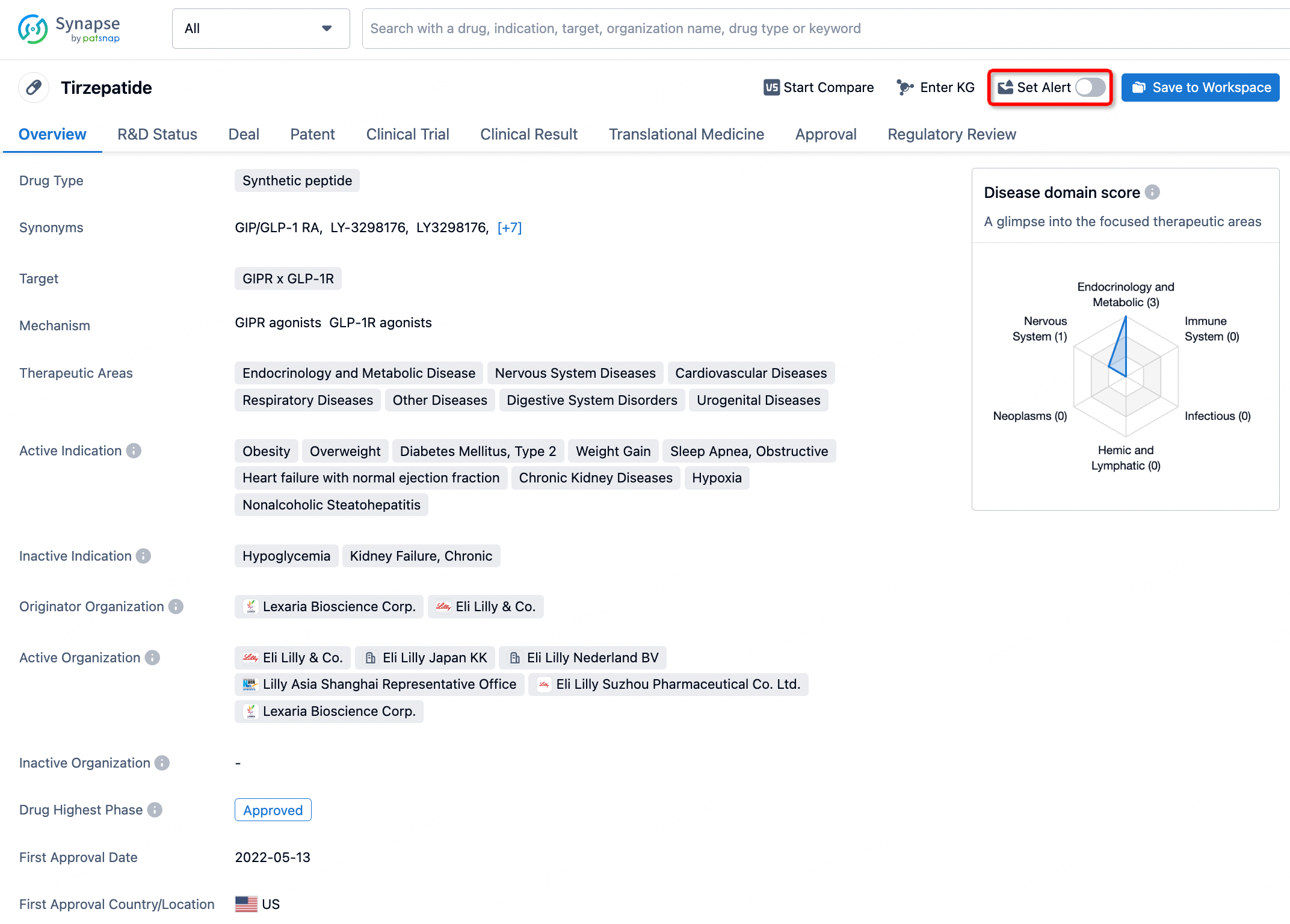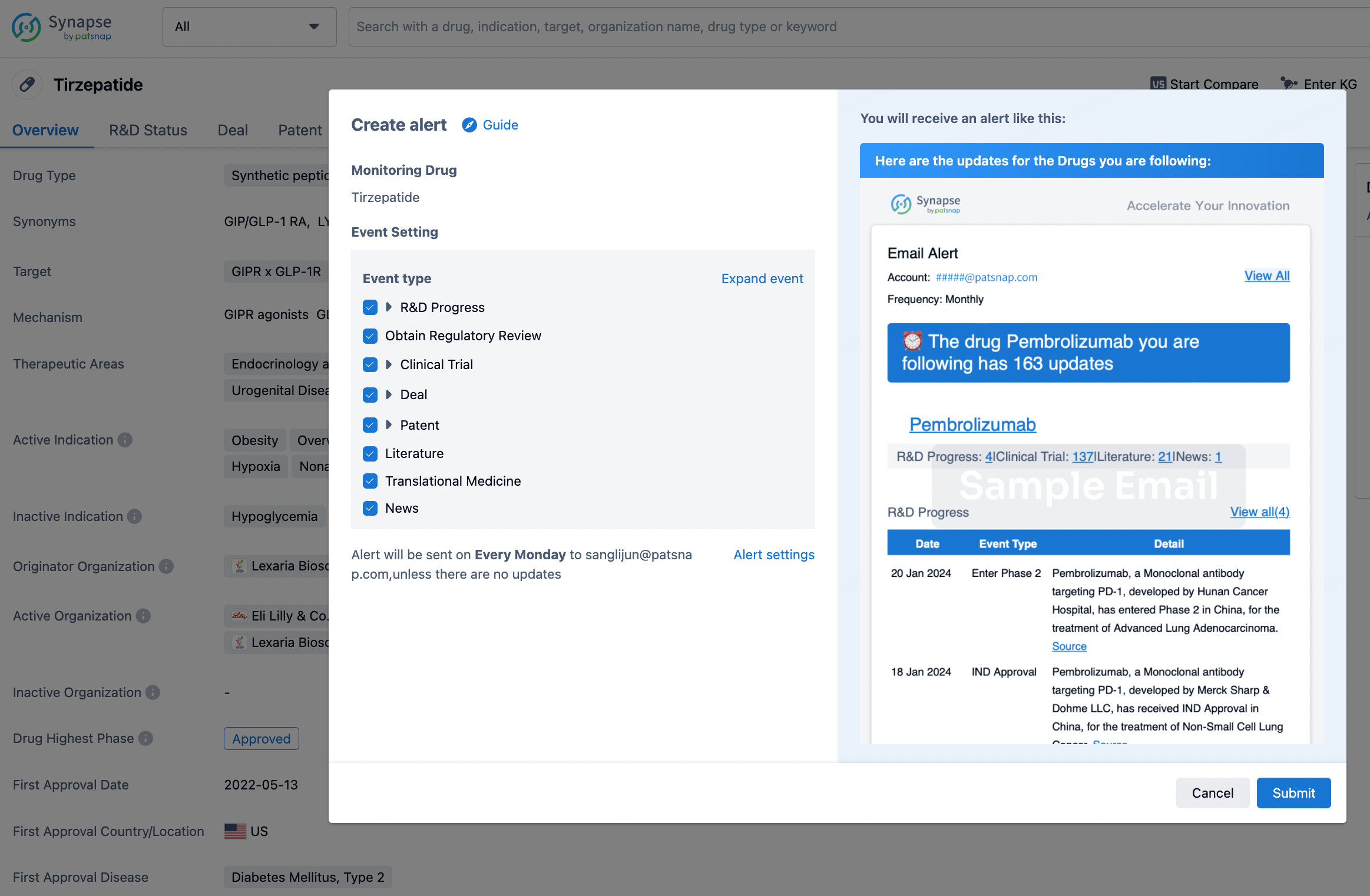Request Demo
What is Difelikefalin used for?
14 June 2024
Introduction to Difelikefalin:
Difelikefalin, known by its trade name Korsuva, is a groundbreaking therapeutic agent designed to target and alleviate symptoms of pruritus, particularly in patients undergoing hemodialysis. Developed by Cara Therapeutics, this drug has garnered attention for its potent antipruritic properties and unique mechanism of action. Difelikefalin is classified as a kappa opioid receptor (KOR) agonist, a novel approach in the pharmacological management of pruritus. Pruritus, or severe itching, is a common and distressing symptom experienced by patients with chronic kidney disease (CKD) who are on hemodialysis. Despite the prevalence and impact of pruritus, treatment options have historically been limited and often ineffective. Difelikefalin has emerged as a promising solution, offering substantial relief for these patients. The drug has undergone rigorous clinical trials, with pivotal studies demonstrating its efficacy and safety, leading to regulatory approval in several regions.
Difelikefalin Mechanism of Action:
The mechanism of action of difelikefalin is centered around its selective activation of kappa opioid receptors (KORs). Unlike traditional opioid receptors, which include mu and delta receptors often associated with analgesia and side effects like addiction and respiratory depression, KORs offer a distinct pathway. Activation of KORs produces antipruritic and anti-inflammatory effects without the risk of euphoria or dependency, making difelikefalin a safer option for long-term use. Specifically, difelikefalin acts peripherally, meaning it does not cross the blood-brain barrier to a significant extent. This peripheral action is crucial as it circumvents the central nervous system side effects associated with other opioids. By binding to KORs on peripheral sensory neurons and immune cells, difelikefalin modulates the release of pruritogenic and pro-inflammatory mediators, thereby reducing the sensation of itch and inflammation. This targeted approach provides a focused and effective treatment for pruritus in CKD patients.
How to Use Difelikefalin:
Difelikefalin is administered intravenously, a method chosen to ensure rapid and direct delivery of the drug into the bloodstream, facilitating quick onset of action. For patients undergoing hemodialysis, difelikefalin is typically given at the end of each dialysis session. This timing aligns with the treatment schedule of hemodialysis patients and ensures consistent therapeutic levels of the drug. The dosing regimen is straightforward: 0.5 mcg/kg, administered via intravenous injection. The onset of action for difelikefalin is relatively swift, with patients beginning to experience relief from pruritus within hours after administration. The duration of effect usually spans the interval between dialysis sessions, providing continuous relief from itching. This method of administration and timing not only maximizes convenience for patients but also aligns with their existing treatment routines, minimizing disruption and enhancing compliance.
What is Difelikefalin Side Effects:
As with any therapeutic agent, difelikefalin is associated with potential side effects. The most commonly reported adverse events are gastrointestinal in nature, including nausea, diarrhea, and vomiting. These symptoms are generally mild to moderate in severity and tend to diminish with continued use. Other reported side effects include dizziness, headache, and somnolence. Of note, the incidence of severe side effects is relatively low, and the drug is generally well-tolerated by patients. Contraindications for the use of difelikefalin include a known hypersensitivity to the drug or any of its components. Additionally, caution is advised in patients with severe hepatic impairment, as the pharmacokinetics of difelikefalin may be altered in these individuals, potentially leading to increased exposure and risk of adverse effects. It is crucial for healthcare providers to conduct a thorough assessment of a patient’s medical history and current medications before initiating treatment with difelikefalin to minimize the risk of adverse reactions.
What Other Drugs Will Affect Difelikefalin:
Difelikefalin is primarily metabolized via non-enzymatic pathways, which reduces the likelihood of significant drug-drug interactions that are common with medications processed by the cytochrome P450 enzyme system. However, certain drugs may still influence its efficacy and safety profile. For instance, concurrent use of drugs that impact renal function could potentially alter the pharmacokinetics of difelikefalin, given that CKD patients already have compromised kidney function. Careful monitoring and dose adjustments may be necessary when difelikefalin is used alongside nephrotoxic agents or drugs requiring renal excretion. Additionally, while difelikefalin is less likely to interact with central nervous system depressants due to its peripheral action, caution should still be exercised when prescribing it with such medications. Overall, while difelikefalin presents a lower risk of drug-drug interactions compared to many other therapies, a comprehensive review of a patient’s medication regimen remains essential to ensure safe and effective use.
Difelikefalin, known by its trade name Korsuva, is a groundbreaking therapeutic agent designed to target and alleviate symptoms of pruritus, particularly in patients undergoing hemodialysis. Developed by Cara Therapeutics, this drug has garnered attention for its potent antipruritic properties and unique mechanism of action. Difelikefalin is classified as a kappa opioid receptor (KOR) agonist, a novel approach in the pharmacological management of pruritus. Pruritus, or severe itching, is a common and distressing symptom experienced by patients with chronic kidney disease (CKD) who are on hemodialysis. Despite the prevalence and impact of pruritus, treatment options have historically been limited and often ineffective. Difelikefalin has emerged as a promising solution, offering substantial relief for these patients. The drug has undergone rigorous clinical trials, with pivotal studies demonstrating its efficacy and safety, leading to regulatory approval in several regions.
Difelikefalin Mechanism of Action:
The mechanism of action of difelikefalin is centered around its selective activation of kappa opioid receptors (KORs). Unlike traditional opioid receptors, which include mu and delta receptors often associated with analgesia and side effects like addiction and respiratory depression, KORs offer a distinct pathway. Activation of KORs produces antipruritic and anti-inflammatory effects without the risk of euphoria or dependency, making difelikefalin a safer option for long-term use. Specifically, difelikefalin acts peripherally, meaning it does not cross the blood-brain barrier to a significant extent. This peripheral action is crucial as it circumvents the central nervous system side effects associated with other opioids. By binding to KORs on peripheral sensory neurons and immune cells, difelikefalin modulates the release of pruritogenic and pro-inflammatory mediators, thereby reducing the sensation of itch and inflammation. This targeted approach provides a focused and effective treatment for pruritus in CKD patients.
How to Use Difelikefalin:
Difelikefalin is administered intravenously, a method chosen to ensure rapid and direct delivery of the drug into the bloodstream, facilitating quick onset of action. For patients undergoing hemodialysis, difelikefalin is typically given at the end of each dialysis session. This timing aligns with the treatment schedule of hemodialysis patients and ensures consistent therapeutic levels of the drug. The dosing regimen is straightforward: 0.5 mcg/kg, administered via intravenous injection. The onset of action for difelikefalin is relatively swift, with patients beginning to experience relief from pruritus within hours after administration. The duration of effect usually spans the interval between dialysis sessions, providing continuous relief from itching. This method of administration and timing not only maximizes convenience for patients but also aligns with their existing treatment routines, minimizing disruption and enhancing compliance.
What is Difelikefalin Side Effects:
As with any therapeutic agent, difelikefalin is associated with potential side effects. The most commonly reported adverse events are gastrointestinal in nature, including nausea, diarrhea, and vomiting. These symptoms are generally mild to moderate in severity and tend to diminish with continued use. Other reported side effects include dizziness, headache, and somnolence. Of note, the incidence of severe side effects is relatively low, and the drug is generally well-tolerated by patients. Contraindications for the use of difelikefalin include a known hypersensitivity to the drug or any of its components. Additionally, caution is advised in patients with severe hepatic impairment, as the pharmacokinetics of difelikefalin may be altered in these individuals, potentially leading to increased exposure and risk of adverse effects. It is crucial for healthcare providers to conduct a thorough assessment of a patient’s medical history and current medications before initiating treatment with difelikefalin to minimize the risk of adverse reactions.
What Other Drugs Will Affect Difelikefalin:
Difelikefalin is primarily metabolized via non-enzymatic pathways, which reduces the likelihood of significant drug-drug interactions that are common with medications processed by the cytochrome P450 enzyme system. However, certain drugs may still influence its efficacy and safety profile. For instance, concurrent use of drugs that impact renal function could potentially alter the pharmacokinetics of difelikefalin, given that CKD patients already have compromised kidney function. Careful monitoring and dose adjustments may be necessary when difelikefalin is used alongside nephrotoxic agents or drugs requiring renal excretion. Additionally, while difelikefalin is less likely to interact with central nervous system depressants due to its peripheral action, caution should still be exercised when prescribing it with such medications. Overall, while difelikefalin presents a lower risk of drug-drug interactions compared to many other therapies, a comprehensive review of a patient’s medication regimen remains essential to ensure safe and effective use.
How to obtain the latest development progress of all drugs?
In the Synapse database, you can stay updated on the latest research and development advances of all drugs. This service is accessible anytime and anywhere, with updates available daily or weekly. Use the "Set Alert" function to stay informed. Click on the image below to embark on a brand new journey of drug discovery!
AI Agents Built for Biopharma Breakthroughs
Accelerate discovery. Empower decisions. Transform outcomes.
Get started for free today!
Accelerate Strategic R&D decision making with Synapse, PatSnap’s AI-powered Connected Innovation Intelligence Platform Built for Life Sciences Professionals.
Start your data trial now!
Synapse data is also accessible to external entities via APIs or data packages. Empower better decisions with the latest in pharmaceutical intelligence.


